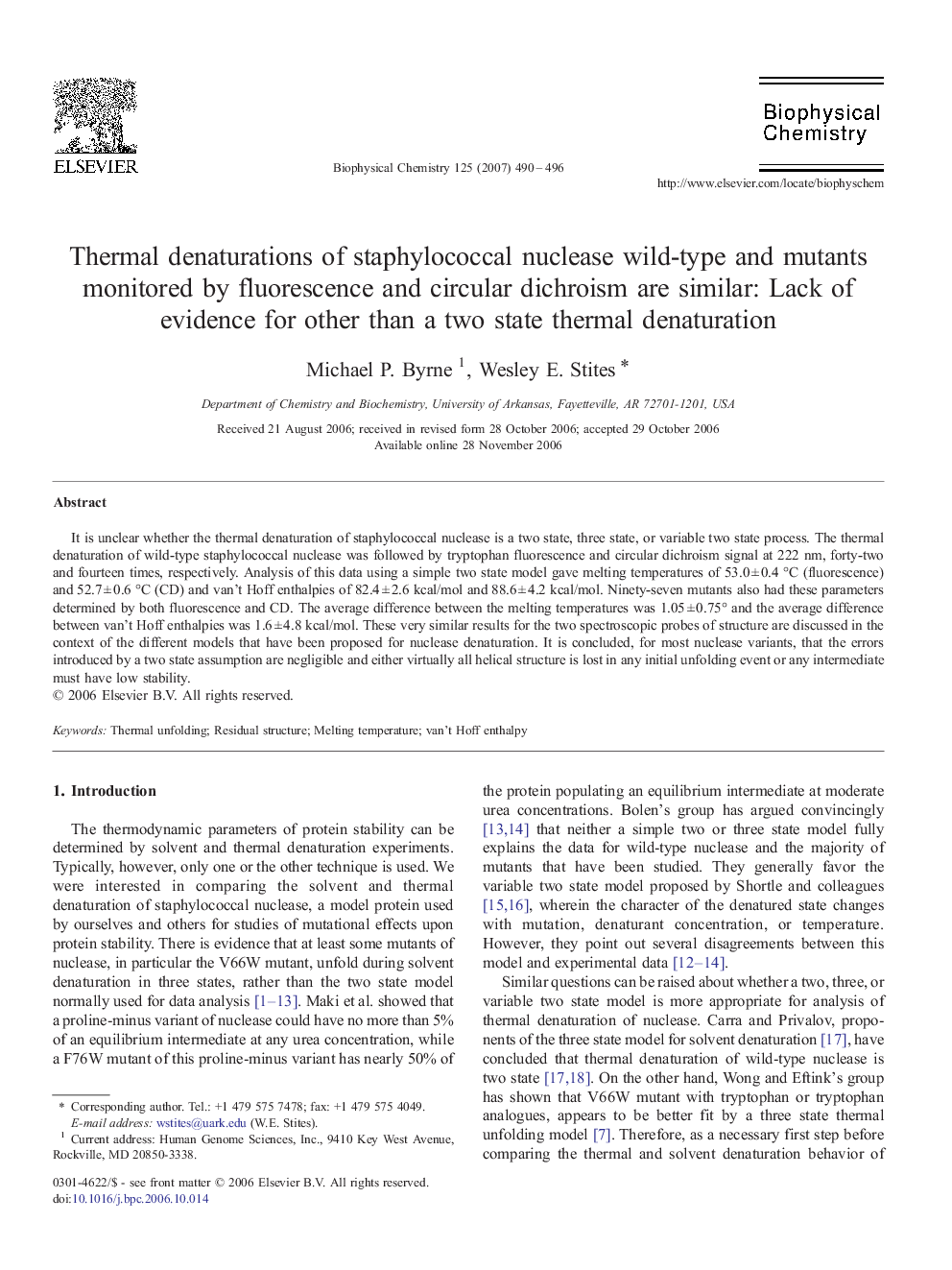| Article ID | Journal | Published Year | Pages | File Type |
|---|---|---|---|---|
| 5372304 | Biophysical Chemistry | 2007 | 7 Pages |
Abstract
It is unclear whether the thermal denaturation of staphylococcal nuclease is a two state, three state, or variable two state process. The thermal denaturation of wild-type staphylococcal nuclease was followed by tryptophan fluorescence and circular dichroism signal at 222 nm, forty-two and fourteen times, respectively. Analysis of this data using a simple two state model gave melting temperatures of 53.0 ± 0.4 °C (fluorescence) and 52.7 ± 0.6 °C (CD) and van't Hoff enthalpies of 82.4 ± 2.6 kcal/mol and 88.6 ± 4.2 kcal/mol. Ninety-seven mutants also had these parameters determined by both fluorescence and CD. The average difference between the melting temperatures was 1.05 ± 0.75° and the average difference between van't Hoff enthalpies was 1.6 ± 4.8 kcal/mol. These very similar results for the two spectroscopic probes of structure are discussed in the context of the different models that have been proposed for nuclease denaturation. It is concluded, for most nuclease variants, that the errors introduced by a two state assumption are negligible and either virtually all helical structure is lost in any initial unfolding event or any intermediate must have low stability.
Related Topics
Physical Sciences and Engineering
Chemistry
Physical and Theoretical Chemistry
Authors
Michael P. Byrne, Wesley E. Stites,
